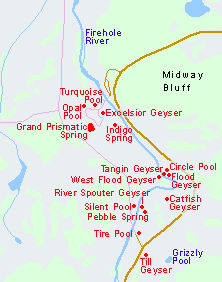
Old Faithful may be more famous, but the Grand Prismatic Hot Spring is the most photographed thermal feature in Yellowstone. That's because of its crazy-bright colors and enormous size.
What Makes the Grand Prismatic so Grand? Deeper than a 10-Story Building. Extremely hot water travels 121 feet from a crack in the Earth to reach the surface of the spring.
The third largest spring in the world, the Grand Prismatic is bigger than a football field at 370 feet in diameter. A gridiron is 360 feet long and 160 feet wide.
Rainbow of Colors. Bright bands of orange, yellow, and green ring the deep blue waters in the spring. The multicolored layers get their hues from different species of thermophile (heat-loving) bacteria living in the progressively cooler water around the spring. And the deep blue center? That’s because water scatters the blue wavelengths of light more than others, reflecting blues back to our eyes.
Yellowstone's Midway Geyser Basin may be small, but it packs a big punch: In addition to Grand Prismatic Spring, see Excelsior Geyser, an enormous geyser crater, Turquoise Pool, and Opal Pool.
Today, this steaming, bright blue pool is essentially a hot spring. But in its heyday in the late 1800s, Excelsior erupted to heights of about 300 feet. It went dormant for much of the 20th century, only to suddenly erupt for two days in 1985—some of its blasts reached 80 feet in height. Though it’s a quiet pool now, Yellowstone’s constantly changing thermal landscape could revive Excelsior Geyser to its former glory once again.
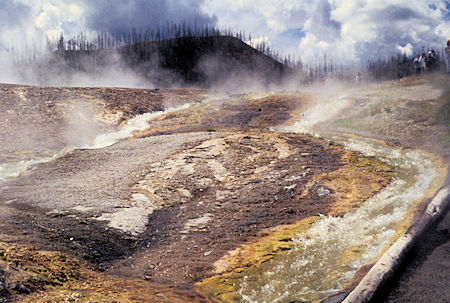
Midway Geyser Basin, Yellowstone National Park
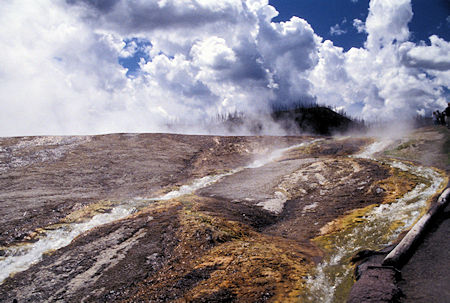
Midway Geyser Basin, Yellowstone National Park
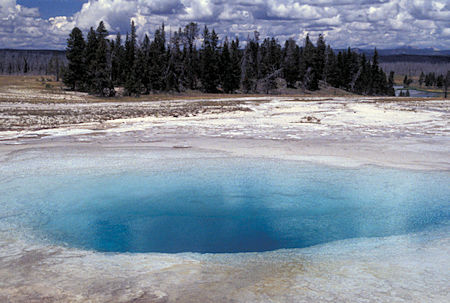
Opal Pool, Midway Geyser Basin, Yellowstone National Park
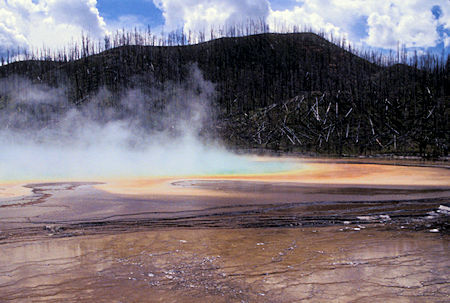
Grand Prismatic Spring, Midway Geyser Basin, Yellowstone National Park
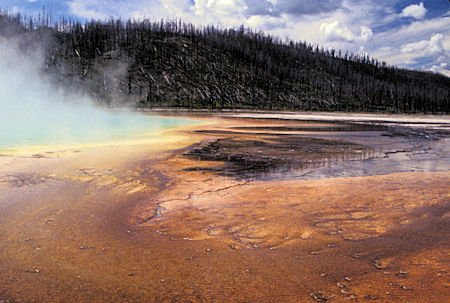
Grand Prismatic Spring, Midway Geyser Basin, Yellowstone National Park
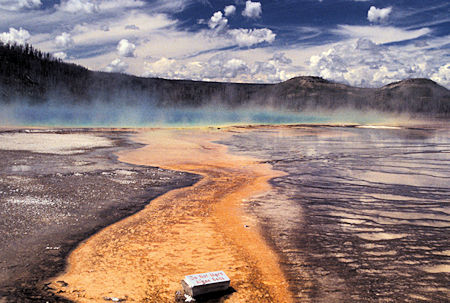
Bacterial Mat, Midway Geyser Basin, Yellowstone National Park
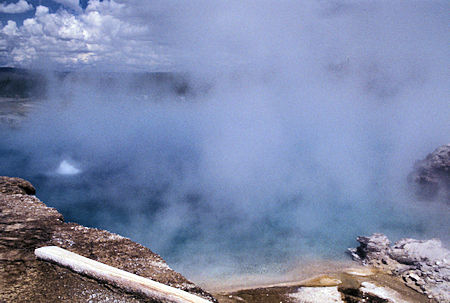
Excelsior Geyser, Midway Geyser Basin, Yellowstone National Park
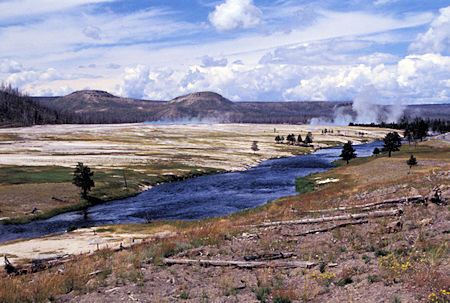
FIrehole River, Midway Geyser Basin, Yellowstone National Park
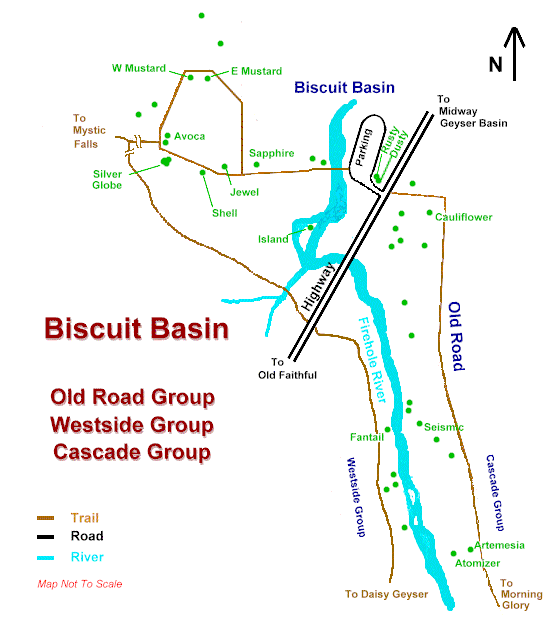
Biscuit Basin is an isolated thermal group and is actually a part of the Upper Geyser Basin.
Biscuit-like sinter deposits once lined the edge of Sapphire Pool's crater, and in the 1880s it received its name for the knobby formations.
On August 17. 1959, an earthquake recorded at 7.5 on the Richter scale had its epicenter just a few miles to the northwest. The earthquake caused Sapphire to erupt, breaking and dislodging the formations.
Biscuit Basin contains a small collection of thermal features. Many, however, are small, gem-like encrusted pools and geysers, including Silver Globe Spring, Sapphire, and Black Opal pools, Jewel, Cauliflower, and Black Pearl geysers.
The Firehole River and a highway divide the basin. A smaller group, located east of the river, contains mainly hot springs.
Cauliflower Geyser is the main feature of this group, and it is identified by the cauliflower or biscuit-like sinter masses surrounding the crater.
Sapphire Pool dominates the main group west of the river. The water of this pool, or spring, is crystal clear with a Oriental blue sapphire tint.
Other important features include Shell Geyser, which has a golden-lined crater, and Jewel Geyser, known for the shiny, beaded sinter around its vent.
The pools were calm during my visit, with a few bubbling and steaming springs surrounded by mellow reflective pools that send rippling runoff over vibrant orange bacterial mats.
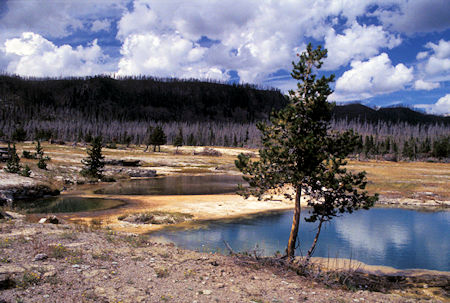
Black Opal Spring, Bisquit Geyser Basin, Yellowstone National Park
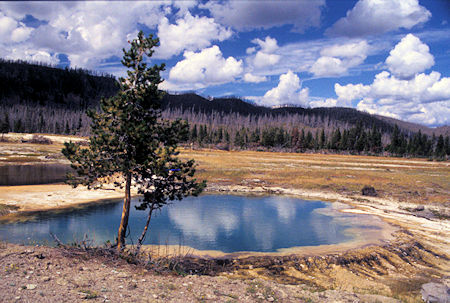
Black Opal Spring, Bisquit Basin, Yellowstone National Park
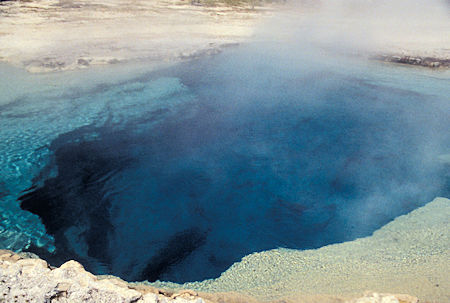
Sapphire Pool (DEEP), Bisquit Basin, Yellowstone National Park
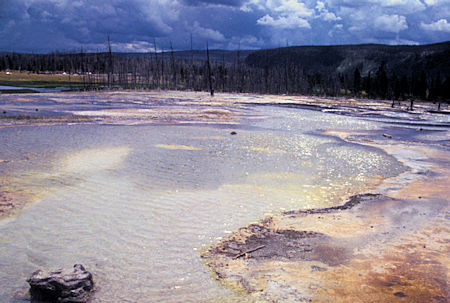
Biscuit Basin, Yellowstone National Park
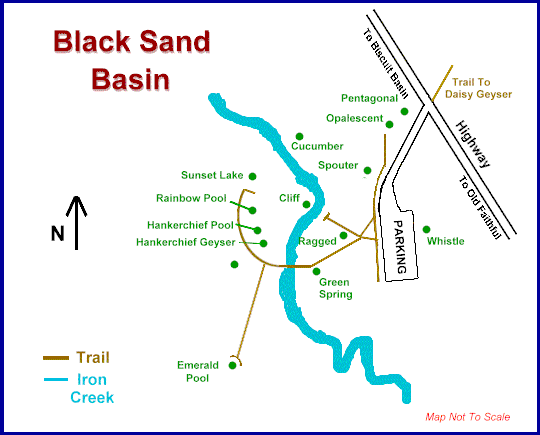
Black Sand Basin, just a mile north of Old Faithful, is one of Yellowstone's most colorful basins that boasts a small isolated collection of geysers and hot springs.
Named for its black sand (obsidian) which is formed when lava cools too quickly. Obsidian is the natural form of glass.
This rare obsidian sand covers much of the Black Sand Basin, which is located within the Upper Geyser Basin of Yellowstone National Park.
Jewel-like geysers and beautiful hot springs show vivid colors, which are the main attraction of the area.
Emerald Pool's deep emerald colors blend amidst the orange and yellow fringes that form the outer ring of the pool.
The Cliff Geyser erupts every few minutes and can reach heights of 30 feet. It's a fountain geyser which means it erupts from a pool.
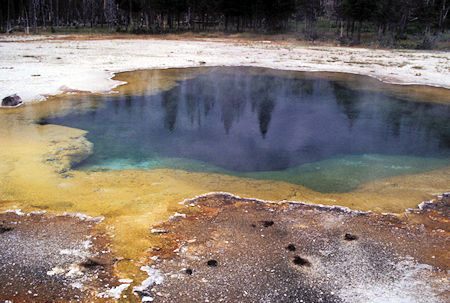
Emerald Pool, Black Sand Basin, Yellowstone National Park
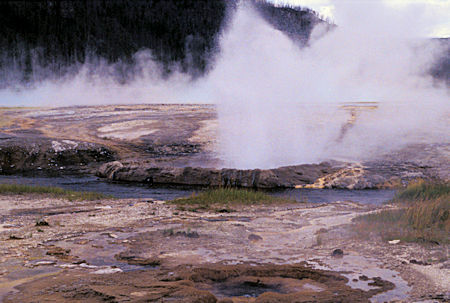
Cliff Geyser, Black Sand Basin, Yellowstone National Park
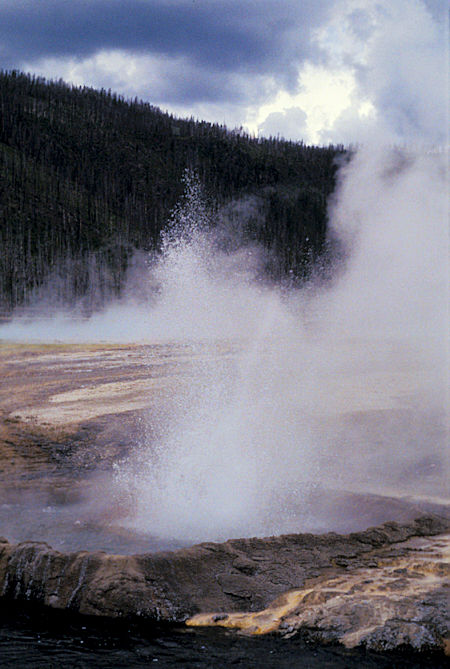
Cliff Geyser, Black Sand Basin, Yellowstone National Park
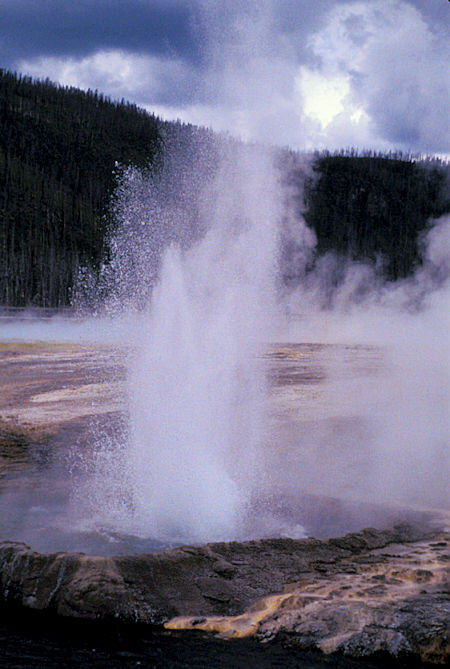
Cliff Geyser, Black Sand Basin, Yellowstone National Park